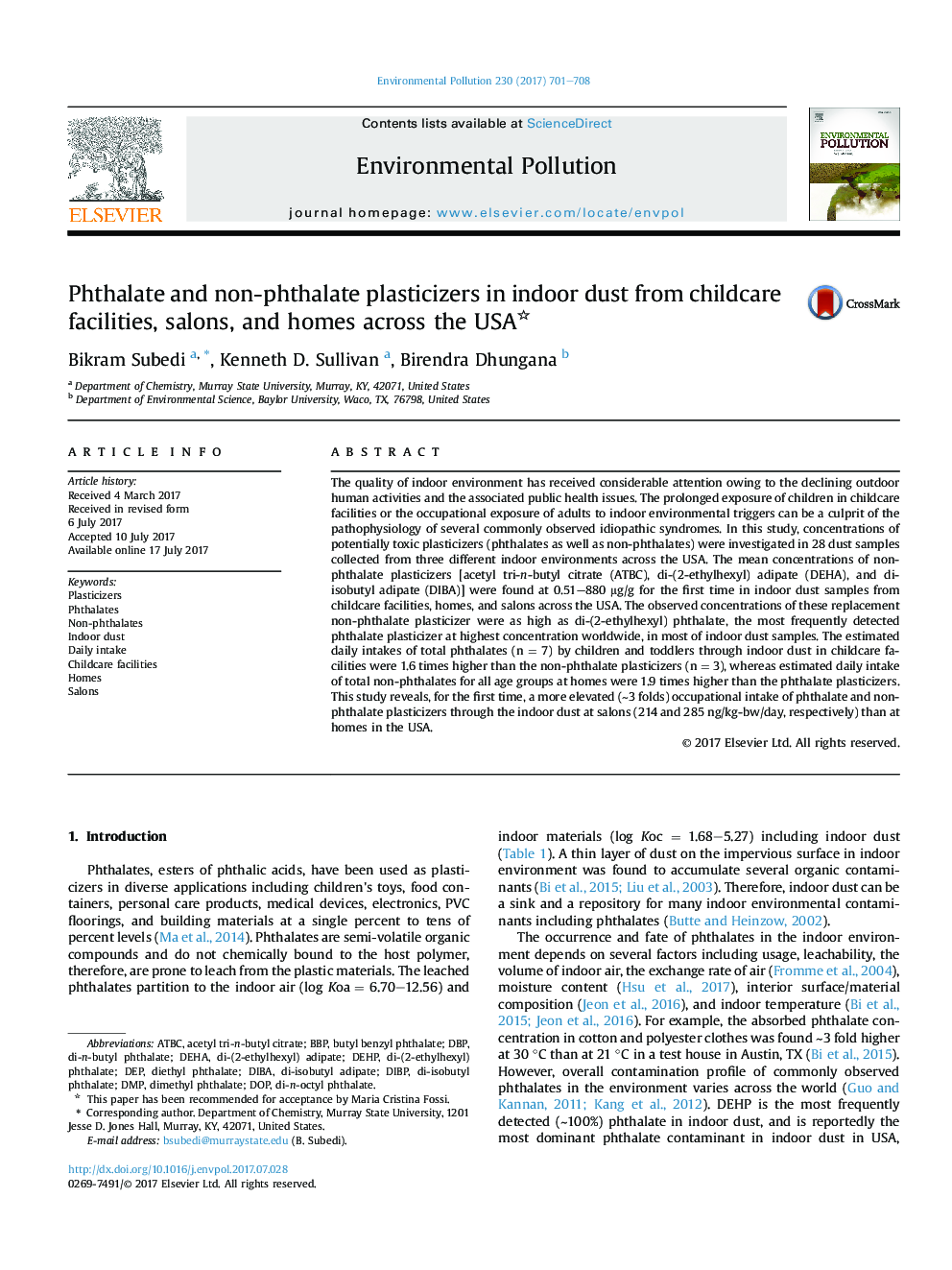| کد مقاله | کد نشریه | سال انتشار | مقاله انگلیسی | نسخه تمام متن |
|---|---|---|---|---|
| 5748717 | 1619143 | 2017 | 8 صفحه PDF | دانلود رایگان |
- Non-phthalate plasticizers found (880 μg/g) in indoor dust for the first time in the USA.
- Plasticizers were found in indoor dust from homes, salons, and daycares across the USA.
- Estimated daily intakes in childcare found significantly higher than at homes.
- Occupational exposure of non-phthalate plasticizers found 285Â ng/kg-bw/day in salons.
The quality of indoor environment has received considerable attention owing to the declining outdoor human activities and the associated public health issues. The prolonged exposure of children in childcare facilities or the occupational exposure of adults to indoor environmental triggers can be a culprit of the pathophysiology of several commonly observed idiopathic syndromes. In this study, concentrations of potentially toxic plasticizers (phthalates as well as non-phthalates) were investigated in 28 dust samples collected from three different indoor environments across the USA. The mean concentrations of non-phthalate plasticizers [acetyl tri-n-butyl citrate (ATBC), di-(2-ethylhexyl) adipate (DEHA), and di-isobutyl adipate (DIBA)] were found at 0.51-880 μg/g for the first time in indoor dust samples from childcare facilities, homes, and salons across the USA. The observed concentrations of these replacement non-phthalate plasticizer were as high as di-(2-ethylhexyl) phthalate, the most frequently detected phthalate plasticizer at highest concentration worldwide, in most of indoor dust samples. The estimated daily intakes of total phthalates (n = 7) by children and toddlers through indoor dust in childcare facilities were 1.6 times higher than the non-phthalate plasticizers (n = 3), whereas estimated daily intake of total non-phthalates for all age groups at homes were 1.9 times higher than the phthalate plasticizers. This study reveals, for the first time, a more elevated (â¼3 folds) occupational intake of phthalate and non-phthalate plasticizers through the indoor dust at salons (214 and 285 ng/kg-bw/day, respectively) than at homes in the USA.
197
Journal: Environmental Pollution - Volume 230, November 2017, Pages 701-708
